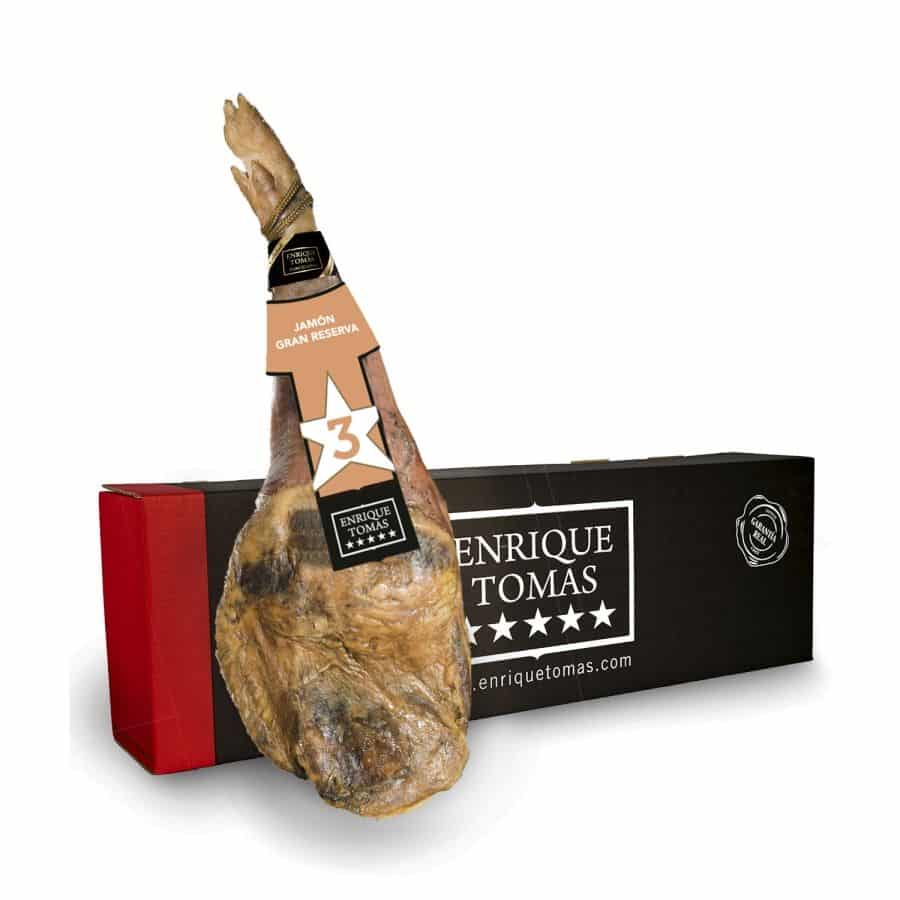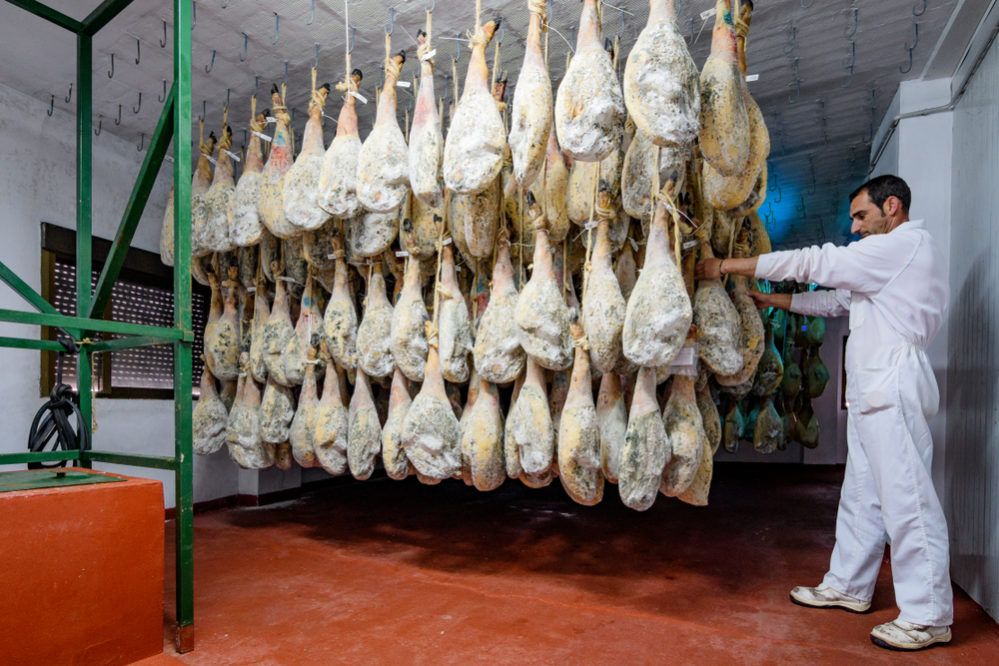
How is Gran Reserva Ham made?
Serrano ham is any ham produced from the hind legs of white pigs, and although its flavor is also delicious, it has nothing to do with that of the Iberian ham. The latter is more oily due to the ability of our peninsula's pigs to infiltrate fat into the muscle.
But, How is Serrano ham made? Is the curing process very different from Iberian ham?
At Enrique Tomás, we'll answer all your questions!
Curing of Serrano Ham
In addition to coming from different pig breeds, the most obvious difference between Serrano and Iberian ham is their price. The curing process for Serrano ham is considerably shorter, and combined with the difference in quality (Iberian ham being of higher quality), this reduces its cost.
Although the curing phases are the same, Serrano ham requires significantly fewer months for the final phase. Just like with Iberian ham, once the hind legs of the pigs have been cut, peeled, and cleaned, the "cooking" process begins, as we like to call it at Enrique Tomás, and it consists of:
- Salting: The hams are buried in salt to dehydrate them, intensify their flavor, and prevent bacterial growth. Similar to the Iberian curing process, the Serrano hams are buried for more or less time depending on their weight. The average duration is around fourteen days.
- Washing and Profiling: Once the legs are ready, they are removed from the salt containers and washed to remove excess salt. Due to being stacked on top of each other, their shape is often altered, so profiling is done to restore their original appearance.
- Post-Salting and Drying: This is the most delicate phase as the pieces are exposed to potential infections. Temperature and humidity levels need to be controlled throughout, and this stage helps equalize the salt concentration in the pieces. This phase usually lasts between 45 and 90 days, depending on the piece.
- Maturation and Aging: As mentioned earlier, this is when the curing time of Serrano ham is significantly reduced compared to Iberian ham. It's during the time spent in storage that the flavors and nuances develop, and the number of months needed for this varies depending on the type of ham. If it's a "reserva," it will be in the drying chambers for fifteen months, while for "Gran Reserva," the period extends to eighteen months.
In the case of Enrique Tomás, it's worth noting that the only Serrano ham we sell is the Jamón Gran Reserva, which is considered the highest quality.
 Curing process of Serrano ham
Curing process of Serrano ham
Curing time is not the only difference between Serrano and Iberian ham
As mentioned earlier, Serrano and Iberian ham come from different pig species, and the genetic peculiarities of Iberian pigs are what make their meat so special. However, breed, price, and curing time are not the only things that set them apart.
 Enrique Tomás Gran Reserva Ham
Enrique Tomás Gran Reserva Ham
Iberian acorn-fed hams are produced from the meat of pigs of this breed that have undergone the "montanera." During this period, their diet consists mainly of acorns, wild herbs, and whatever they find while roaming, which, combined with the exercise involved, results in a very juicy product.
Regarding Serrano ham, it's important to consider that even though white pigs are released in the dehesa to enjoy this quality of life, the ham produced from their hind legs can never be the same because, as mentioned earlier, they lack the ability to infiltrate fat into the muscle. This is why they are generally fed with grain-based feed.
So, How is Serrano ham made? Exactly the same way as Iberian ham, but is the final result the same?
Certainly not!









